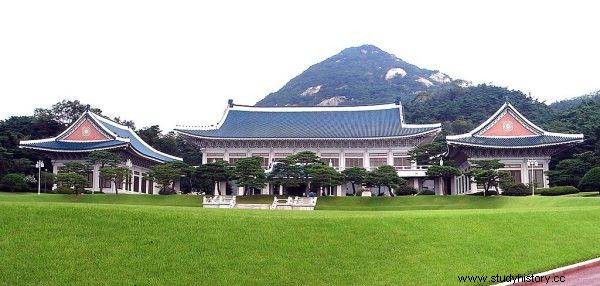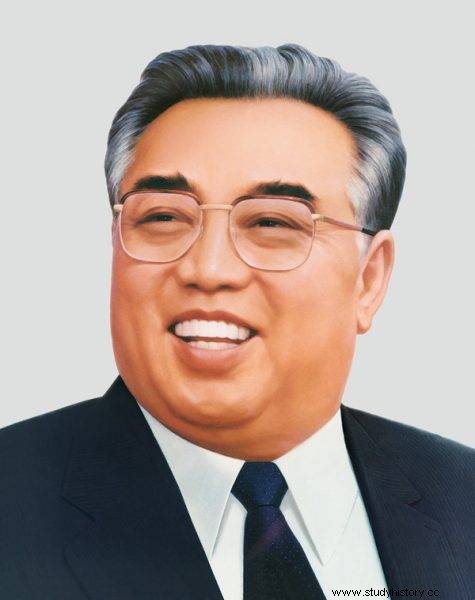On January 18, 1968, a group of 31 North Korean commandos set out from Pyongyang. Three days later, they crossed the border. Soldiers dressed in the uniforms of the South Korean 26th Infantry Division, armed with American weapons and the relevant documents, cut a hole in the newly erected fence. However, they did not know where to go further. They only knew the purpose of the mission - to kill South Korean President Park Chung-hee.
When starting this type of action, it's good to know how to get there. The commandos had to find the president, who is usually in the capital. As a result, soldiers captured several lumberjacks and for five hours questioned them about the way to Seoul and the location of checkpoints. When asked who they were, they replied that they were a group that would unite this country. As you can see, they were well indoctrinated - the leader could be proud of them.
Finally, they released the men on pain of death if anyone was informed about the meeting. Nevertheless, the lumberjacks notified the police. However, the officers found their story unbelievable and sent a single patrol for the sake of peace. At that time, North Korean soldiers were already heading towards the South Korean capital.
Let's take it for granted
Through the streets of Seoul, the squad slowly approached the Blue House. The soldiers approached the last checkpoint on their way. On the clocks it was almost 21. The commandos showed the sentry the documents which said they were a secret, special counter-intelligence unit of the army of the Republic of Korea. The security guard let them into the presidential residence, but something did not suit him.

The Blue House - the seat of the President of South Korea.
Maybe this is the time when South Korean troops are usually in the barracks? Or maybe the secret nature of the branch? In any case, the man decided to call his superiors with the question:is such a special group entitled to enter the Blue House? It quickly turned out that not only did there not exist, but that such a branch did not exist at all.
And it got out
When the truth came out, the commandos were only 100 meters from the buildings. The first shots rang out before the sentry hung up the phone. The mansion grounds turned into a regular battlefield.
The attackers dispersed and began to withdraw in small groups. The South Korean side managed to catch one of the bombers, but immediately after being caught, he committed suicide. The next days were spent looking for the rest of the would-be killers. Of the remaining 30 soldiers, one was arrested, one escaped to North Korea and the rest were liquidated.
The outcome of the attempted assassination attempt on Park Chung-hee was tragic. 26 people were killed and 66 injured. A bus ran through the line of fire during the shooting, resulting in about two dozen civilian casualties. Additionally, when an attempt was made to stop commandos fleeing to North Korea, 4 American soldiers guarding the border were killed.
Theory or the plan?
The commando captured by the soldiers of the Republic of Korea turned out to be 27-year-old Second Lieutenant Kim Shin-jo - very open to cooperation. The prisoner of war, without much pressure, told in great detail about the sabotage and subversive actions planned and already carried out by the Democratic People's Republic of Korea.
He also revealed the details of the operation in which he participated - he showed the place where his unit crossed the border and gave the text of the order that the soldiers received when they left Pyongyang. It read: Cut the throat of President Park Chung-hee .
Kim Shin-jo was released from custody on April 10, 1970. He became a South Korean citizen. In his new homeland, he started a family and was baptized. President Lee Myung-bak has appointed him as human rights adviser. The North Korean regime sentenced his relatives, who remained in the country, to death for treason.

Kim Il-sung maintained that he had nothing to do with the bombing.
There is a theory according to which the information about the attack was supposed to be a signal to start the Second Korean War. On the northern side, there were allegedly ready units of paratroopers and ground troops for the attack. In the first place, the above-mentioned units were supposed to occupy postal services and radio broadcasting stations, according to an alleged plan. On January 22, 1968 the outbreak of the communist uprising in the south and the first assaults on military units were predicted that would remain faithful to the Republic of Korea.
Were such arrangements really in place? Probably not, but you can expect anything from the North Korean leader. Especially that a moment after the commando attack, the official media in his country for the first time informed about the outbreak of "armed guerrilla warfare" in the south of the peninsula .
I have nothing to do with this!
Grand Commander Kim Il-sung, during his first contacts with South Korea in 1972, stated that he had nothing to do with the attack on President Park Chung-hee. According to his statement, the so-called . the rally on the Blue House was the work of leftist adventurers and neither he nor the members of his party had any idea about the planned action.
In fact, it was the Bureau for Foreign Liaison of the Korea Labor Party's Central Committee behind the bombing. Of course, this type of action could not go without the consent (and most likely it was organized on the orders of) Kim Il-sung. It is also possible that his son, Kim Jong Il, who officially took over the sabotage and sabotage activities in 1974, led the project from behind the scenes.
The period from 1966 to 1969 was the hottest time in the Democratic People's Republic of Korea's relationship with the Republic of Korea. During these three years there were 1,034 incidents violating the armistice agreement signed on July 27, 1953.
